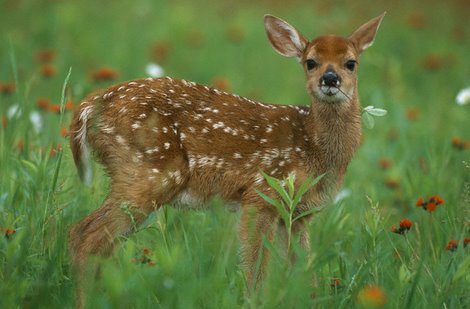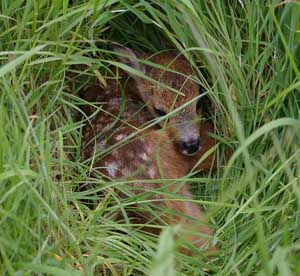
It’s almost May, so fawning season is just around the corner. And as such, today we are going to talk about providing fawning habitat. Overuse of grasslands/rangelands that are overstocked with domestic cattle on a long term basis can kill individual plants, usually grass species. This can be a huge problem for fawns. Fawns need grassy cover.
Sure, whitetail do not consume much grass — it makes up less than 10 percent of their diet and they typically on eat it at a very young growth stage — but it is important for fawn cover! Healthy ground-cover can help with fawn survival and help get more fawns recruited into the adult population.
As a matter of fact, even areas with a “high” number of predators can observe relatively good (50+ percent) fawn crops with adequate grassy cover. On the flip side, barren ground with a heavily used forest understory can spell “poor fawn crop.” If this problem is not addressed, expect deer numbers in the area to decline over time. Hey, if the fawns can’t survive and you shoot the rest, what’s left?

Another problem created by too many cows (and deer) is that they can prevent woody plant seedlings from being established, which also leads to a decline in the habitat’s carrying capacity for deer. Even with supplemental feeding/supplemental planting for cows, they will continue to put pressure on the native range plants. The same can be said about deer. You don’t want too many of anything! It takes a long time for some plant species to recover.
Let’s say last year a pasture supported 20 cows. However, this year is hot, dry, and the only thing moist is your appetite for chicken-fried backstrap. Well, after the cows eat all the palatable grasses — and forbs — they will turn to brush. Yep, that’s the stuff that produces browse — the staple of a white-tailed deer’s diet.
So what’s left? You end up with over-grazed pastures and over-used browse plants. Fawns can’t survive because there is a lack of ground cover. Every fawn becomes a sitting duck. To make matters worse, if a fawn does not get killed by a predator, food resources for does are limited. Without enough browse and forbs to produce milk, the fawn gets abandoned by the doe. That fawn crop is getting mighty slim.
Now you see where we’re going. The objective is to maintain cattle and deer numbers at a level where every animal in the population is receiving adequate nutrition without causing degradation in the quantity and quality of native range plants. Factors such as fawn production, body size, antler development, and degree of browse utilization are good indicators to monitor to evaluate if a range is stocked at, above, or below its carrying capacity.
